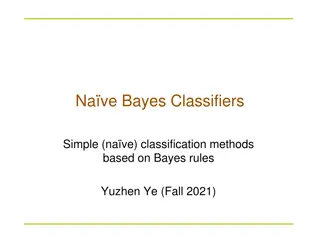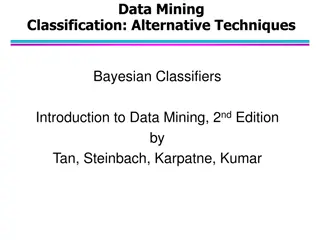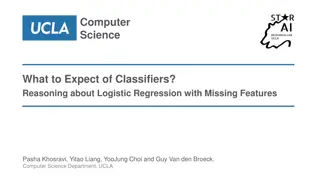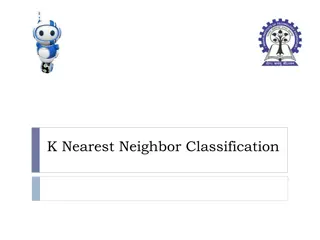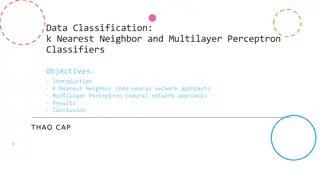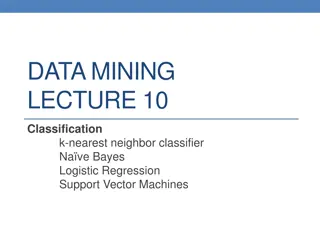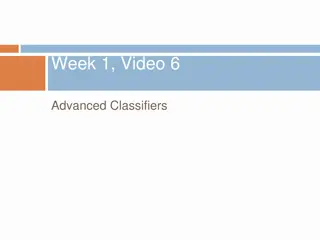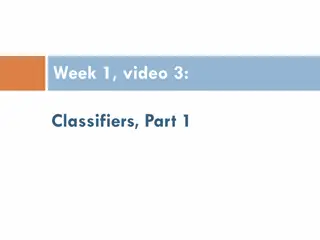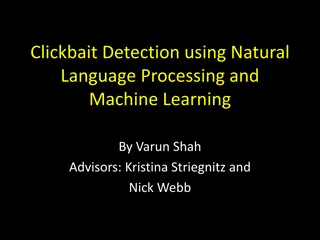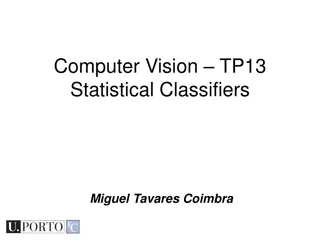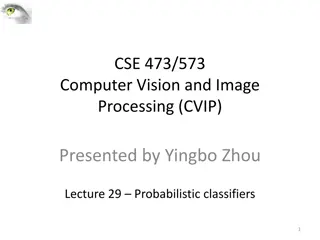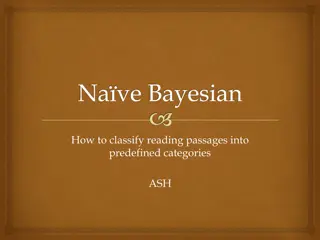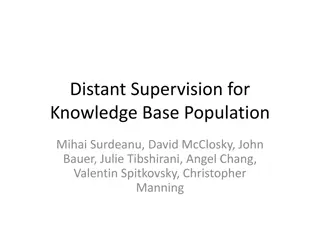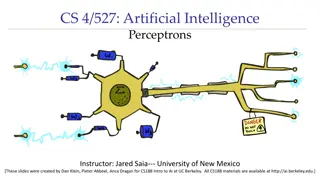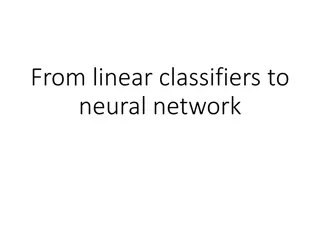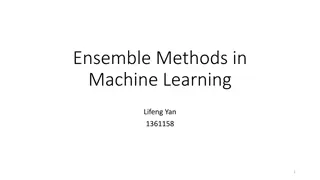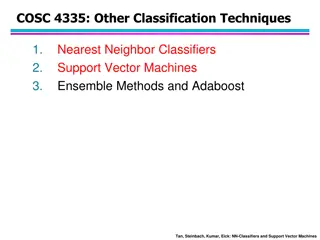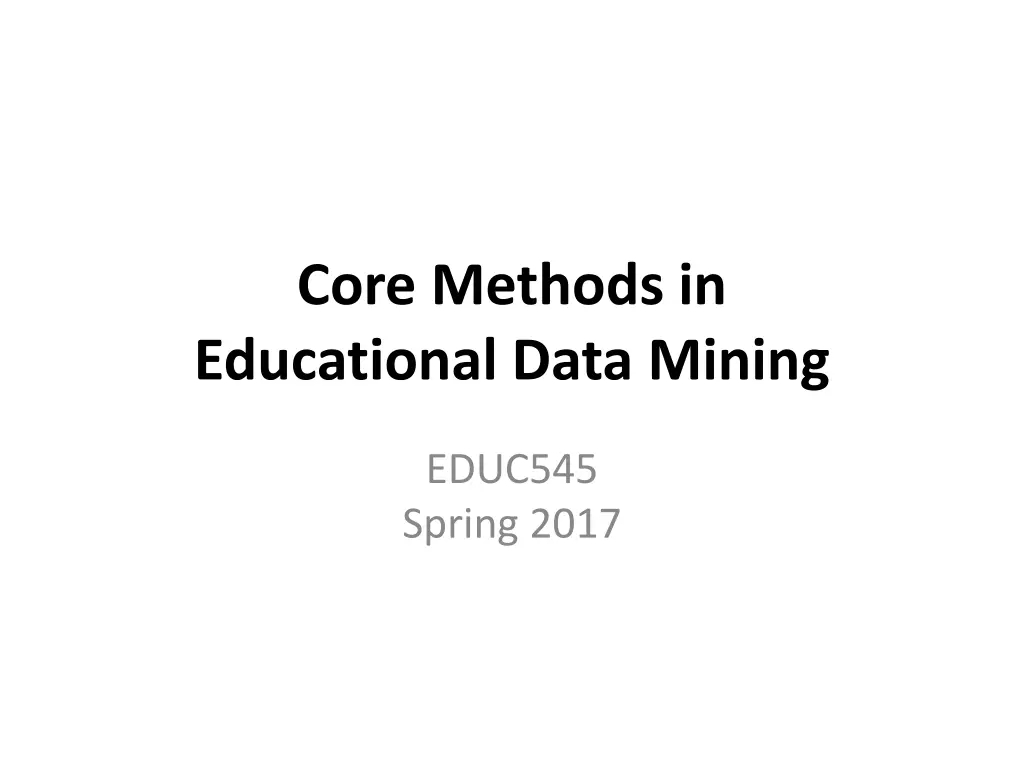
Core Methods in Educational Data Mining Homework Summary
Explore decision tree modeling in educational data mining using the W-J48 operator from the Weka Extension Pack. Understand the concept of over-fitting and how to adjust models to prevent it. Analyze the impact of excluding certain variables on model performance and consider features that may lead to overly specific models. Key focus on non-cross-validated kappa values for model evaluation.
Download Presentation

Please find below an Image/Link to download the presentation.
The content on the website is provided AS IS for your information and personal use only. It may not be sold, licensed, or shared on other websites without obtaining consent from the author. If you encounter any issues during the download, it is possible that the publisher has removed the file from their server.
You are allowed to download the files provided on this website for personal or commercial use, subject to the condition that they are used lawfully. All files are the property of their respective owners.
The content on the website is provided AS IS for your information and personal use only. It may not be sold, licensed, or shared on other websites without obtaining consent from the author.
E N D
Presentation Transcript
Core Methods in Educational Data Mining EDUC545 Spring 2017
The Homework Let s go over basic homework 2
Q1 Build a decision tree (using operator W-J48 from the Weka Extension Pack) on the entire data set. What is the non-cross-validated kappa? What was process? What was result?
Q2 That s the correct answer, but let s think about it. The kappa value you just obtained is artificially high the model is over-fitting to which student it is. What is the non-cross-validated kappa, if you build the model (using the same operator), excluding student? How did you modify the model to remove the student term? Were there multiple ways to accomplish this?
Q2 That s the correct answer, but let s think about it. Why was the kappa value artificially high?
Q2 That s the correct answer, but let s think about it. Why was the kappa value artificially high? How do we know that we were over-fitting to the student?
Q2 How did you remove student from the model? There were multiple ways to accomplish this
Q2 What is the non-cross-validated kappa, if you build the model (using the same operator), excluding student? Did the number go up? Go down? Stay the same? What does this mean?
Q3 Some other features in the data set may make your model overly specific to the current data set. Which data features would not apply outside of the population sampled in the current data set? Answers?
Q4 What is the non-cross-validated kappa, if you build the W-J48 decision tree model (using the same operator), excluding student and the variables from Question 3? Recall that you decided to eliminate School, Class, and Coder, as well as STUDENTID. Answers?
Q4 What is the non-cross-validated kappa, if you build the W-J48 decision tree model (using the same operator), excluding student and the variables from Question 3? Recall that you decided to eliminate School, Class, and Coder, as well as STUDENTID. Answers? Was this algorithm successful?
Q5 What is the non-cross-validated kappa, for the same set of variables you used for question 4, if you use Na ve Bayes? Answers?
Q6 What is the non-cross-validated kappa, for the same set of variables you used for question 4, if you use W-JRip? Answers?
Q7 What is the non-cross-validated kappa, for the same set of variables you used for question 4, if you use Logistic Regression? (Hint: You will need to transform some variables to make this work; RapidMiner will tell you what to do) How did you do the variable transform? Why did you need to do the variable transform? Answers?
Q8 Wow, that was a lot of waiting for nothing. What is the non-cross-validated kappa, for the same set of variables you used for question 4, if you use Step Regression (called Linear Regression)? Answers?
Q9 What is the non-cross-validated kappa, for the same set of variables you used for question 4, if you use k-NN instead of W-J48? (We ll discuss the results of this test later). Answers? Why did you get that result?
Q10 What is the kappa, if you delete School, Class, Coder, and STUDENTID, use W-J48, and conduct 10-fold stratified-sample cross- validation? How did you set this up? Answers?
Q11 Why is the kappa lower for question 11 (cross- validation) than question 4 (no cross- validation?)
Q12 What is the kappa, for the same set of variables you used for question 4, if you use k- NN, and conduct 10-fold stratified-sample cross-validation?
Q13 k-NN and W-J48 got almost the same Kappa when compared using cross-validation. But the kappa for k-NN was much higher (1.000) when cross-validation wasn't used. Why is that?
What is the difference between a classifier and a regressor?
What are some things you might use a classifier for? Bonus points for examples other than those in the BDE videos
Do folks feel like they understood logistic regression? Any questions?
Anyone willing to come up and do a couple examples?
Logistic Regression m = 0.5A - B + C A B C M P(M) 0 0 0
Logistic Regression m = 0.5A - B + C A B C M P(M) 0 0 1
Logistic Regression m = 0.5A - B + C A B C M P(M) 0 1 1
Logistic Regression m = 0.5A - B + C A B C M P(M) 4 1 1
Logistic Regression m = 0.5A - B + C A B C M P(M) 100 -100 100
Why would someone Use a decision tree rather than, say, logistic regression?
Has anyone Used any classification algorithms outside the set discussed/recommended in the videos? Say more?
Other questions, comments, concerns about lectures?
Did anyone read Hand article? Thoughts?
Did anyone read Pardos article last week? Thoughts?
Back to clustering lecture Slides 26-50
Next Class Wednesday, February15 Behavior Detection Baker, R.S. (2015) Big Data and Education. Ch.1, V5. Ch. 3, V1, V2. Sao Pedro, M.A., Baker, R.S.J.d., Gobert, J., Montalvo, O. Nakama, A. (2013) Leveraging Machine-Learned Detectors of Systematic Inquiry Behavior to Estimate and Predict Transfer of Inquiry Skill. User Modeling and User-Adapted Interaction, 23 (1), 1-39. Kai, S., Paquette, L., Baker, R.S., Bosch, N., D'Mello, S., Ocumpaugh, J., Shute, V., Ventura, M. (2015) A Comparison of Face-based and Interaction- based Affect Detectors in Physics Playground. Proceedings of the 8th International Conference on Educational Data Mining, 77-84. Creative HW 1 due

